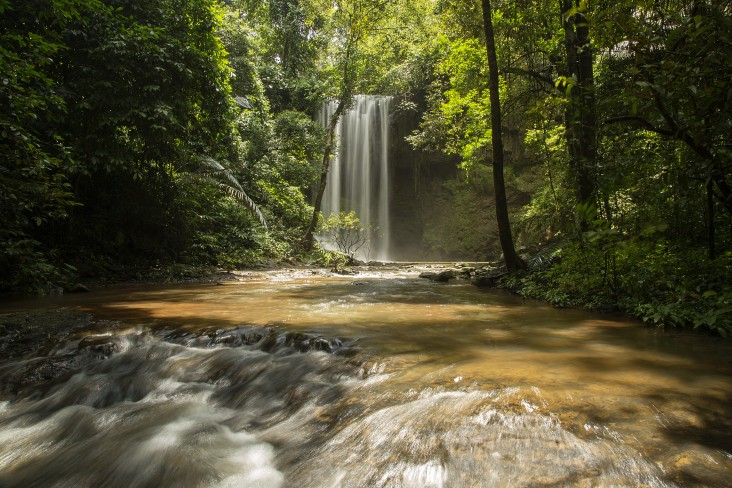USAID helps Cambodia protect and benefit from its abundant natural resources by teaching communities to better manage and conserve its forests.
Deforestation and wildlife crimes continue to threaten Cambodia’s forests and biodiversity. These challenges are compounded by lack of livelihood opportunities for local communities, contributing to forest clearing and degradation, overexploitation of key species, and undervaluing of ecological services such as carbon sequestration. USAID support addresses these challenges and helps Cambodians sustainably manage their forests and rich biodiversity.
USAID activities support communities to sustainably manage non-timber forest products, promote ecotourism, and expand climate-sensitive agriculture for improved livelihoods. In addition, USAID supports Cambodia to meet international commitments for the UN Framework Convention on Climate Change and establish programs for Reducing Emissions from Deforestation and Forest Degradation (REDD+). These activities benefit local communities who receive revenue from carbon sequestration, build resilience to the impacts of climate change, and provide support for communities to engage in sustainable forest management. Cambodia is widely recognized as both a major source and transit country for illegal wildlife trade and USAID supports the fight against wildlife trafficking in coordination with other U.S. government agencies.
RESULTS
Over the past five years USAID has:
- Helped over 318,000 people reap economic benefits of sustainable natural management and conservation.
- Improved the management of natural resources of more than 3,000,000 hectares of land.
- Reduced over 25 million metric tons of Greenhouse Gas Emissions from deforestation and land use change.
- Facilitated sales of over $40 million in carbon credits.
- Provided assistance to over 24,000 indigenous people.
- Leveraged investments of over $50 million for forest management and biodiversity conservation.
Last updated: October 04, 2022



Comment
Make a general inquiry or suggest an improvement.